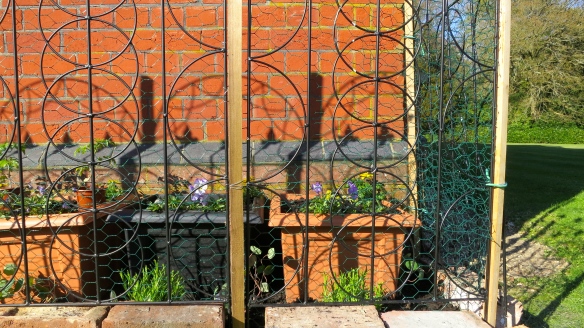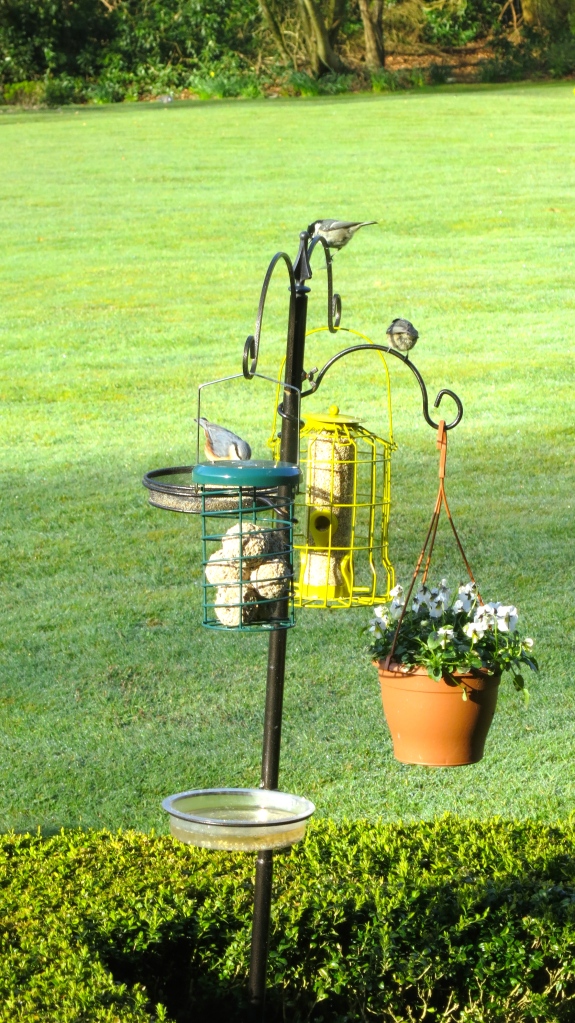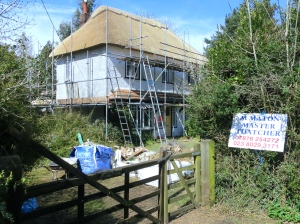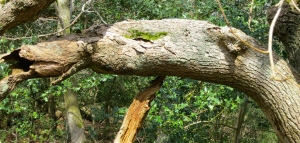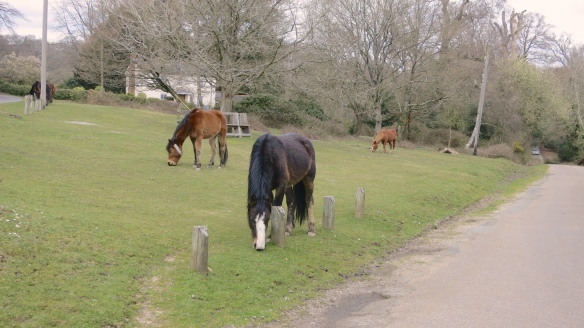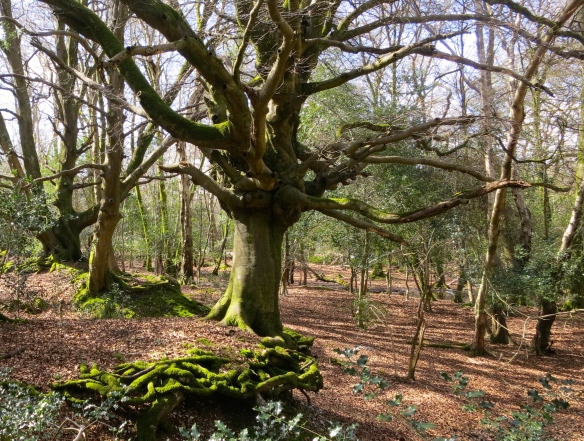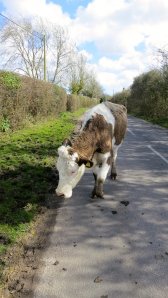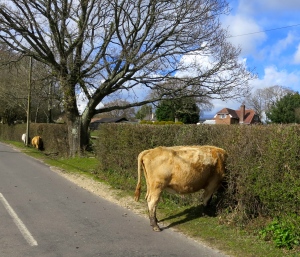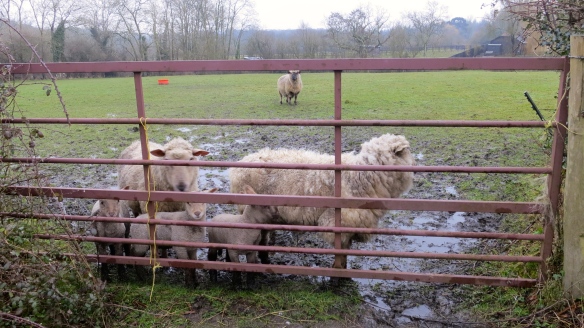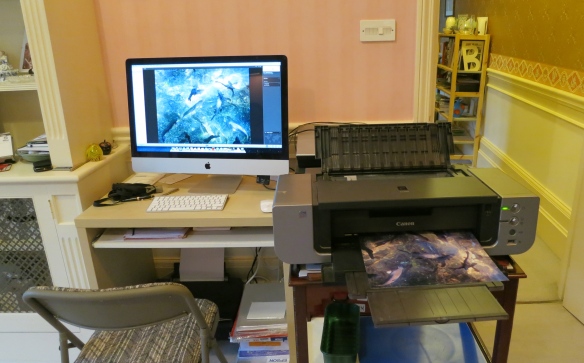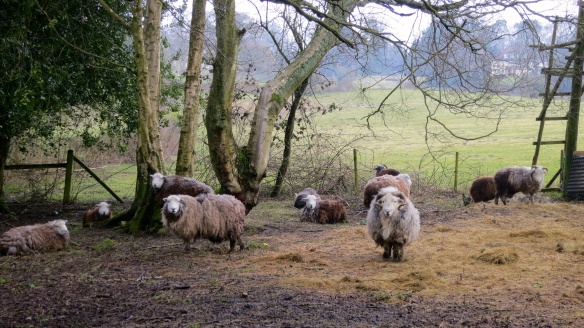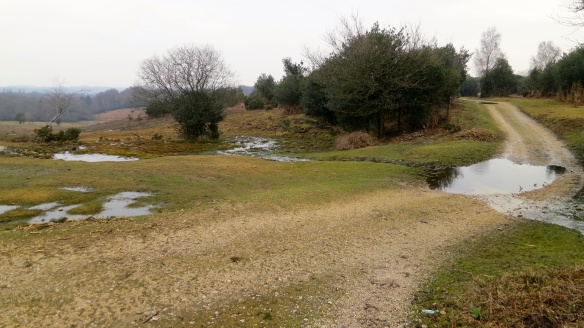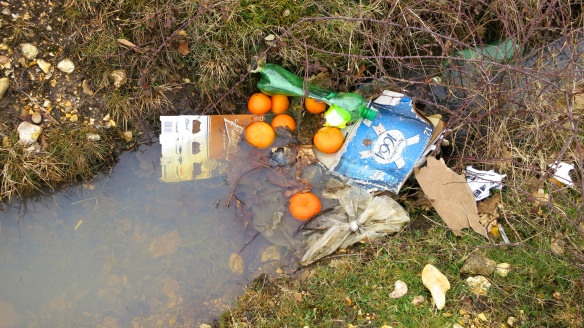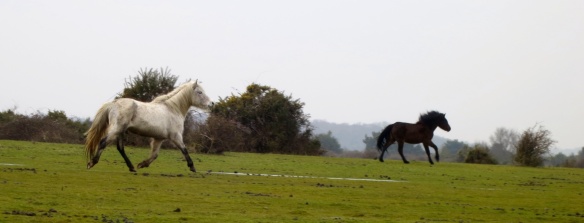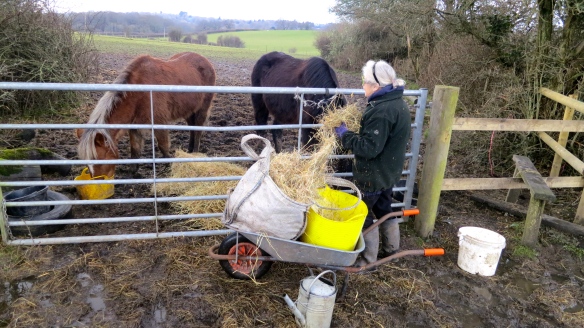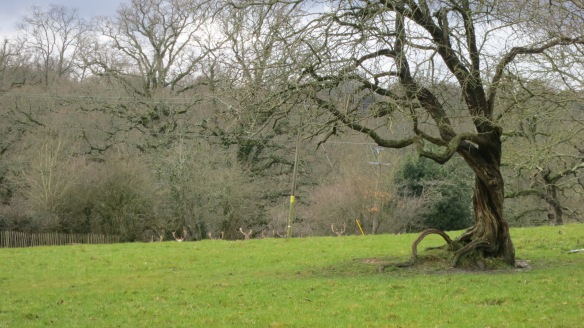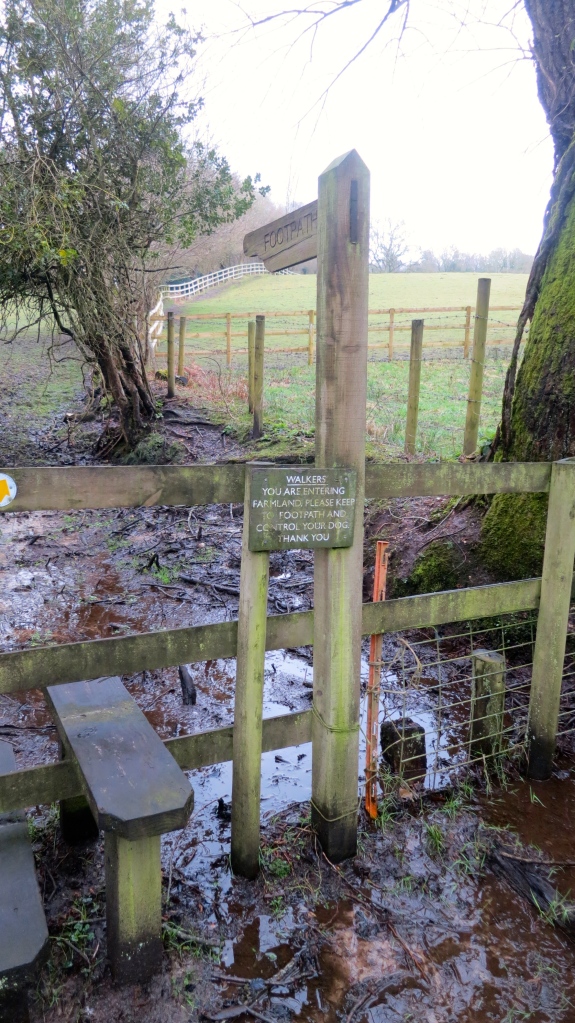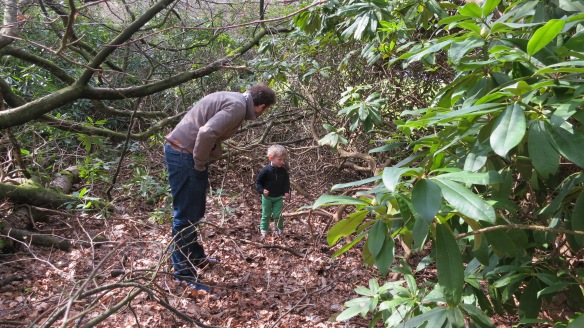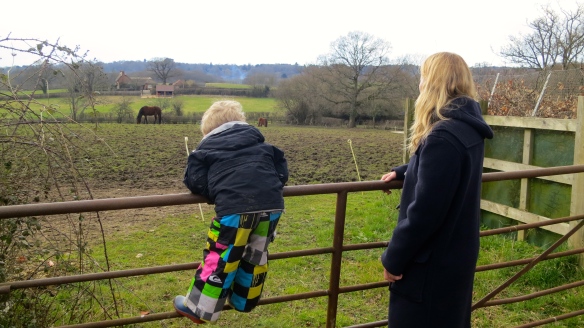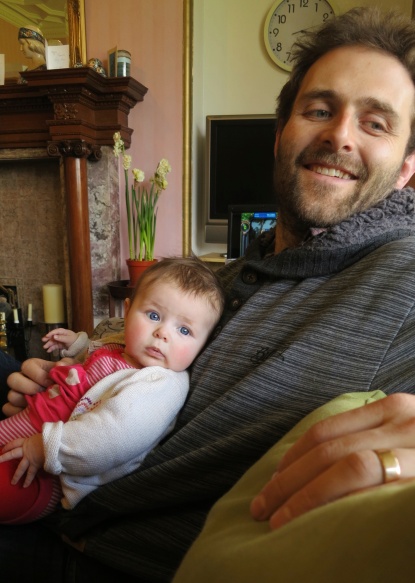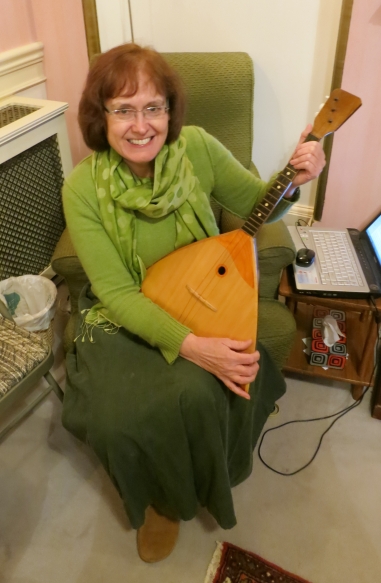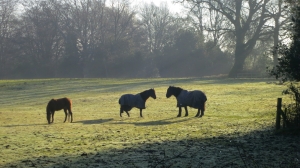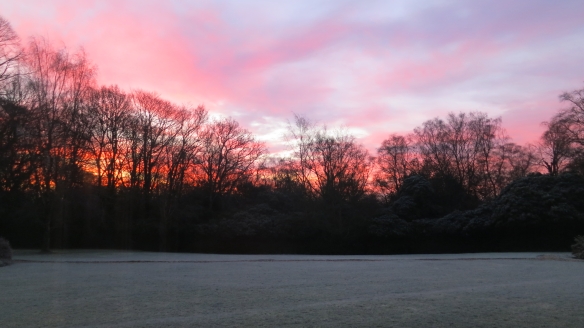 It was such a glorious day that we decided to set off early to find some of the wonderful locations we had stumbled on yesterday. Jackie drove me as far as Deadman Hill on Roger Penny Way, with an agreement to meet in Frogham carpark after two hours.
It was such a glorious day that we decided to set off early to find some of the wonderful locations we had stumbled on yesterday. Jackie drove me as far as Deadman Hill on Roger Penny Way, with an agreement to meet in Frogham carpark after two hours.  Shortly before I reached Ashley Walk on Godshill Ridge, Jackie, who had driven on to Frogham, drove back, passing me. She paused to explain that she was going home for her phone in case we needed it. That, as we will see, was a fruitless exercise.
Shortly before I reached Ashley Walk on Godshill Ridge, Jackie, who had driven on to Frogham, drove back, passing me. She paused to explain that she was going home for her phone in case we needed it. That, as we will see, was a fruitless exercise.
As usual, generations of thoughtful ponies had prepared my passage across the heath. Gliding along on layers of bracken stalks and desiccated droppings, my walking boots felt like carpet slippers. The fresher excreta was best avoided, especially as it was above that that the numerous clouds of midges gathered. These flying ticklers reminded me of those by the River Wandle in Morden described on 2nd November last year. On the approach to Godshill a large pool of water had not yet dried up. A short, fat, hairy pony, reminding me of Ernie Wise, was drinking from it. As I neared the animal it raised its snout, turned, and lumbered towards me in an amorous manner, with green matter hanging from flaring nostrils and liquid dripping from its whiskers. The green matter, fortunately, was pondweed. I wasn’t sure about the liquid, but as it was nuzzled onto my suit jacket sleeve, I rather hoped it was water.
 Roadside daffodils were now in bloom. What a difference a day makes.
Roadside daffodils were now in bloom. What a difference a day makes.  Soon after spotting some of these in Godshill, I was tempted by the entrance to Well Lane, which sported a footpath sign, to depart from my planned route which did not include leaving the beaten track. It was a mixed blessing that I did so. Labouring up the steep rise ahead of me were an elderly man and his ageing dog. This was Peter Trim. Peter had lived there for twenty six years, all but the last he had spent guiding walkers. He knew these forest areas like the back of his hand. Which was just as well for me. He described the route I should take to reach Frogham. Initially it involved two stiles and a bridge over a stream. Fields had to be crossed. When I had finished speaking with him I got some of it right.
Soon after spotting some of these in Godshill, I was tempted by the entrance to Well Lane, which sported a footpath sign, to depart from my planned route which did not include leaving the beaten track. It was a mixed blessing that I did so. Labouring up the steep rise ahead of me were an elderly man and his ageing dog. This was Peter Trim. Peter had lived there for twenty six years, all but the last he had spent guiding walkers. He knew these forest areas like the back of his hand. Which was just as well for me. He described the route I should take to reach Frogham. Initially it involved two stiles and a bridge over a stream. Fields had to be crossed. When I had finished speaking with him I got some of it right.
 This friendly widower pointed out his garage to me. I had walked past it without noticing it, largely because I was watching him climb the slope. That was an omission. The facade of this structure is covered in small paintings Peter has produced, each one having some significance for him. He described many of these for me. The Riding for Disabled logo represents his years as a volunteer for that organisation. One more worth singling out is that of the rear ends of four ponies, showing the cuts of their tails, each kind indicating a different territory, as an aid to identification. This is midway on the right side of the gallery. The dog hobbled across the front as I was taking the photograph. Peter urged it to remove itself. I asked him to let it be, as it would add to the ambience.
This friendly widower pointed out his garage to me. I had walked past it without noticing it, largely because I was watching him climb the slope. That was an omission. The facade of this structure is covered in small paintings Peter has produced, each one having some significance for him. He described many of these for me. The Riding for Disabled logo represents his years as a volunteer for that organisation. One more worth singling out is that of the rear ends of four ponies, showing the cuts of their tails, each kind indicating a different territory, as an aid to identification. This is midway on the right side of the gallery. The dog hobbled across the front as I was taking the photograph. Peter urged it to remove itself. I asked him to let it be, as it would add to the ambience.
Since he arrived in Well Lane Peter has never wanted to be anywhere else. A sweep of his arm took in the whole of the valley below, where much wartime preparation had taken place. He recited much, but all I’ve managed to take in is testing of bouncing bombs in the Second World War, and Boer War rifle practice. Someday a visit with a notebook might pay dividends. I’m sure this man would be amenable.
Almost as soon as I had taken my leave of Peter I realised the value of his guidance. Just a few yards down the lane, building materials and a wire fence blocked the path. I could just ease myself past the obstacle, reach a gate I needed to open, and cross the first stile.  I was now on farmland. Across the stream there was a sheepfield to the right, its flock grazing in the sunlight. As I traversed the bridge I was rewarded with a rare sight indeed.
I was now on farmland. Across the stream there was a sheepfield to the right, its flock grazing in the sunlight. As I traversed the bridge I was rewarded with a rare sight indeed.  Trooping in single file from a copse onto the field to the left was a stately parade of magnificent stags. A small rabbit hopped over to meet them. He didn’t stay long. Maybe he’d had in mind a comparison of scuts, and realised theirs were bigger than his. In any group there is always a straggler. This was no exception. As the rabbit reached the trees, the lagging member trotted down from the bank.
Trooping in single file from a copse onto the field to the left was a stately parade of magnificent stags. A small rabbit hopped over to meet them. He didn’t stay long. Maybe he’d had in mind a comparison of scuts, and realised theirs were bigger than his. In any group there is always a straggler. This was no exception. As the rabbit reached the trees, the lagging member trotted down from the bank.
 The final stile opened onto a still very muddy area. In contrast to yesterday’s farmer who had ensured only the most intrepid wayfarers would enter his land, this owner had laid a series of helpful stepping stones.
The final stile opened onto a still very muddy area. In contrast to yesterday’s farmer who had ensured only the most intrepid wayfarers would enter his land, this owner had laid a series of helpful stepping stones.
Consulting my Ordnance Survey map I turned right onto the minor road ahead. So far, so good. 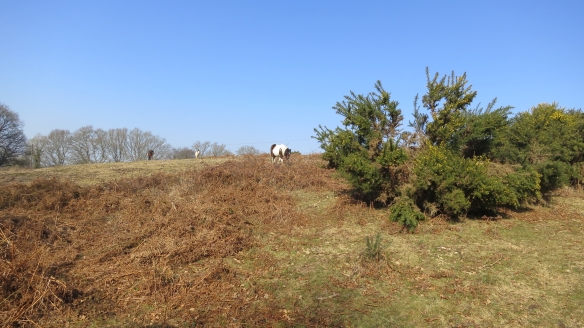 Then I turned left too early and found myself on Hart Hill. A string of ponies were making their way to a gorse bush above me as I realised I shouldn’t be up there and turned back to the junction at which I should have gone straight on. A woman was standing in her garden on a bend in the road. She told me I was well on my way to Frogham, I had to go straight on, cross the brook, turn right and walk up over a ridge which she indicated on the distant horizon. As I continued a car stopped and the driver asked me for directions. I ask you! She asked me for directions! Although I was a bit dubious about it, she decided to go straight on. Soon she turned around, stopped, and got out her mobile phone. I quickly realised why. The road had ended. It now became a scarcely trodden footpath. I carried on, seeking the brook. All that remotely resembled a brook was a ditch alongside the footpath and a few little streams that were now not much more than mudholes, running across the path into it. Eventually, the path becoming less and less well travelled, my nerve cracked, and I reversed my steps to the helpful woman’s house. By now I had to negotiate my way among a large group of ponies lolling about all over the road. Rounding a bend I met a really evil-looking black and white terrier of some sort. It guarded the gate to a property. As far as I was concerned it was on the wrong side of the closed gate. Silently waiting for me to come alongside its home, it let out savage war cries and rushed, snapping, at my legs. I had to kick out a bit.
Then I turned left too early and found myself on Hart Hill. A string of ponies were making their way to a gorse bush above me as I realised I shouldn’t be up there and turned back to the junction at which I should have gone straight on. A woman was standing in her garden on a bend in the road. She told me I was well on my way to Frogham, I had to go straight on, cross the brook, turn right and walk up over a ridge which she indicated on the distant horizon. As I continued a car stopped and the driver asked me for directions. I ask you! She asked me for directions! Although I was a bit dubious about it, she decided to go straight on. Soon she turned around, stopped, and got out her mobile phone. I quickly realised why. The road had ended. It now became a scarcely trodden footpath. I carried on, seeking the brook. All that remotely resembled a brook was a ditch alongside the footpath and a few little streams that were now not much more than mudholes, running across the path into it. Eventually, the path becoming less and less well travelled, my nerve cracked, and I reversed my steps to the helpful woman’s house. By now I had to negotiate my way among a large group of ponies lolling about all over the road. Rounding a bend I met a really evil-looking black and white terrier of some sort. It guarded the gate to a property. As far as I was concerned it was on the wrong side of the closed gate. Silently waiting for me to come alongside its home, it let out savage war cries and rushed, snapping, at my legs. I had to kick out a bit.
The helpful woman was not at home. I decided to go back and have another go. This time a driver, getting into a van told me there was no way through to Frogham using that lady’s directions. His advice was to go back the way I had come and look for a footpath on my left. I found it. There, facing me, were the stepping stones I had crossed earlier. That wasn’t going to be any use, so I went on to Newgrounds where I met another woman who confirmed the first woman’s directions. She said it would take me about an hour and a quarter. Now, since Jackie would be expecting me in the Frogham carpark at that very moment, that was a bit awkward. But we both had our mobile phones, and Jackie was very patient and had Miranda Hart to entertain her, and it was a good hour to lunchtime, so all would be well.
Ah. No signal. Try again. I had a signal but she didn’t. I left a message. I did that several times in the next three quarters of an hour. What I didn’t know was that she was doing the same, and had even driven off to find a signal, to no avail.
Before setting off yet again, I had a really good look at the map, and, there, clearly marked, not very many yards from where I’d turned back, was Ditchend Brook. 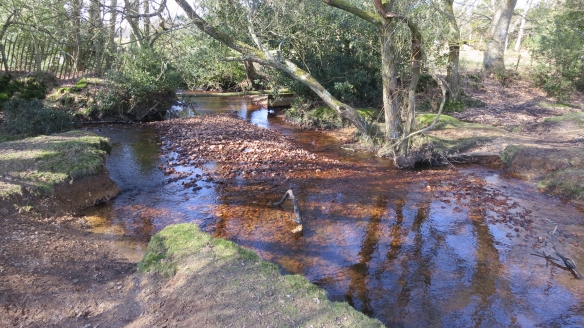 I reached it in double quick time, especially when, as anticipated, I had to encounter the terrible terrier again. This time he had brought his little mate along. Warding off two snapping, snarling dogs is a bit more difficult. I had not received instructions about how to cross the lovely cool rivulet with clear water running over an albeit shallow stony bed. Of course I had to walk across it. Which, trousers hoisted, I did.
I reached it in double quick time, especially when, as anticipated, I had to encounter the terrible terrier again. This time he had brought his little mate along. Warding off two snapping, snarling dogs is a bit more difficult. I had not received instructions about how to cross the lovely cool rivulet with clear water running over an albeit shallow stony bed. Of course I had to walk across it. Which, trousers hoisted, I did.
This was hopeful. Just turn right, up and over the heath, and Frogham and Jackie await. Ah. But, which of the numerous tracks criss-crossing the heath would be the right one? 
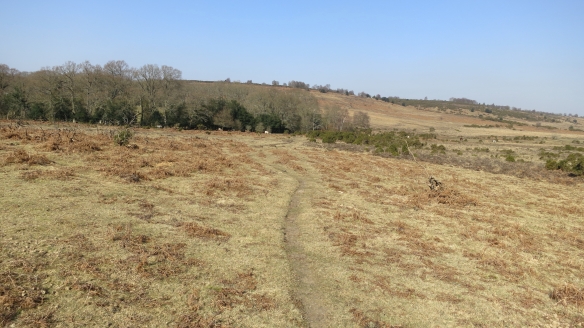 I rather liked the look of one which skirted areas marked as Burnt Balls and Long Bottom. Hopefully it would lead to Hampton Ridge, which runs down to Frogham.
I rather liked the look of one which skirted areas marked as Burnt Balls and Long Bottom. Hopefully it would lead to Hampton Ridge, which runs down to Frogham.  Paying attention to the contour lines on the map, I should stay along the bottom edge of that ridge, otherwise I’d end up on Thompson’s Castle. Since my Thompson family live on Mapperley Top near Nottingham, I didn’t think there would be much point in that.
Paying attention to the contour lines on the map, I should stay along the bottom edge of that ridge, otherwise I’d end up on Thompson’s Castle. Since my Thompson family live on Mapperley Top near Nottingham, I didn’t think there would be much point in that.
Hampton Ridge is a wide thoroughfare. Once on there it was downhill all the way. Jackie was waiting. I was three quarters of an hour late. From her vantage point, not having any idea of the direction I would be taking, she had actually spotted me coming down from the ridge, and jumped up and down waving her arms in the air. Sadly, I didn’t notice.
As we settled down to lunch at the Fighting Cocks pub in Godshill, Jackie commented that, what with Burnt Balls, Long Bottom, and Fighting Cocks, it had been rather a ‘Carry On’ walk. Her quip refers to the scurrilous series of films throughout the 1960s, all entitled ‘Carry On……………’. They were notorious for their suggestive scenarios and double entendre dialogue. Well, whichever way you look at it, this morning’s effort had been a bit of a carry on.
 The lunch was amazing. We took the pensioners’ special, two items for £7.95. We both chose starters, pate for Jackie and whitebait for me; and each had haddock chips and peas to follow. The starters alone were a meal in themselves. All homemade and very well cooked. Peroni and Otter Ale were drunk.
The lunch was amazing. We took the pensioners’ special, two items for £7.95. We both chose starters, pate for Jackie and whitebait for me; and each had haddock chips and peas to follow. The starters alone were a meal in themselves. All homemade and very well cooked. Peroni and Otter Ale were drunk.
Aldi’s pork spare ribs were almost as good as Jackie’s special fried rice which combined for our evening meal. I finished the Saint Emilion while Jackie savoured Hoegaarden.
 As I dug out the trench this morning for Jackie’s protective netting, and she was planting seedlings in pots, I noticed that blossom has indeed come to the Lodge garden. By mid afternoon the sun has always moved across to the other side of the garden.
As I dug out the trench this morning for Jackie’s protective netting, and she was planting seedlings in pots, I noticed that blossom has indeed come to the Lodge garden. By mid afternoon the sun has always moved across to the other side of the garden. Today John’s lawn mowing looked splendid in its light. The natural landscaping, presenting different sweeping levels, with a distinct slope down to the East, reminds us that the building occupies the site of an Iron Age hill fort. Unfortunately my enjoyment of the sunshine was somewhat curtailed by my spending much of the day on administration, too boring to record, most of which should have been done months ago. I just managed to get to the village shop in time to post ten letters and collect my dry cleaning.
Today John’s lawn mowing looked splendid in its light. The natural landscaping, presenting different sweeping levels, with a distinct slope down to the East, reminds us that the building occupies the site of an Iron Age hill fort. Unfortunately my enjoyment of the sunshine was somewhat curtailed by my spending much of the day on administration, too boring to record, most of which should have been done months ago. I just managed to get to the village shop in time to post ten letters and collect my dry cleaning.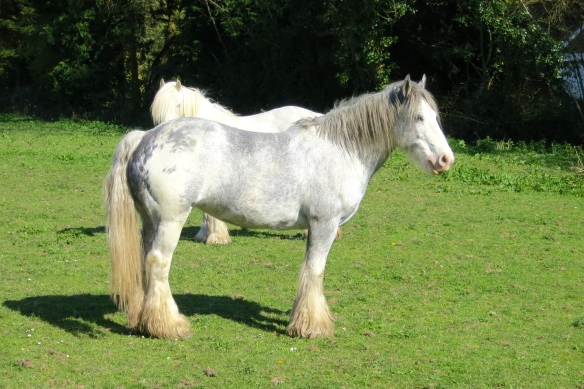 A snorting I heard came from two magnificent farm horses, which must be a particular breed, now occupying a field across the road from Minstead Hall. I don’t think the ponies have the energy for blowing air through their noses. By the time I returned home, Jackie had almost completed her little garden fence.
A snorting I heard came from two magnificent farm horses, which must be a particular breed, now occupying a field across the road from Minstead Hall. I don’t think the ponies have the energy for blowing air through their noses. By the time I returned home, Jackie had almost completed her little garden fence. The tasteful symphony in white and cream with an intro of orange that Jackie served up for our evening meal was smoked haddock, cauliflower cheese (recipe), mashed potatoes, and carrots. Accompanied by a 2012 Bordeaux sauvignon blanc, it was followed by a delicious plum crumble.
The tasteful symphony in white and cream with an intro of orange that Jackie served up for our evening meal was smoked haddock, cauliflower cheese (recipe), mashed potatoes, and carrots. Accompanied by a 2012 Bordeaux sauvignon blanc, it was followed by a delicious plum crumble.